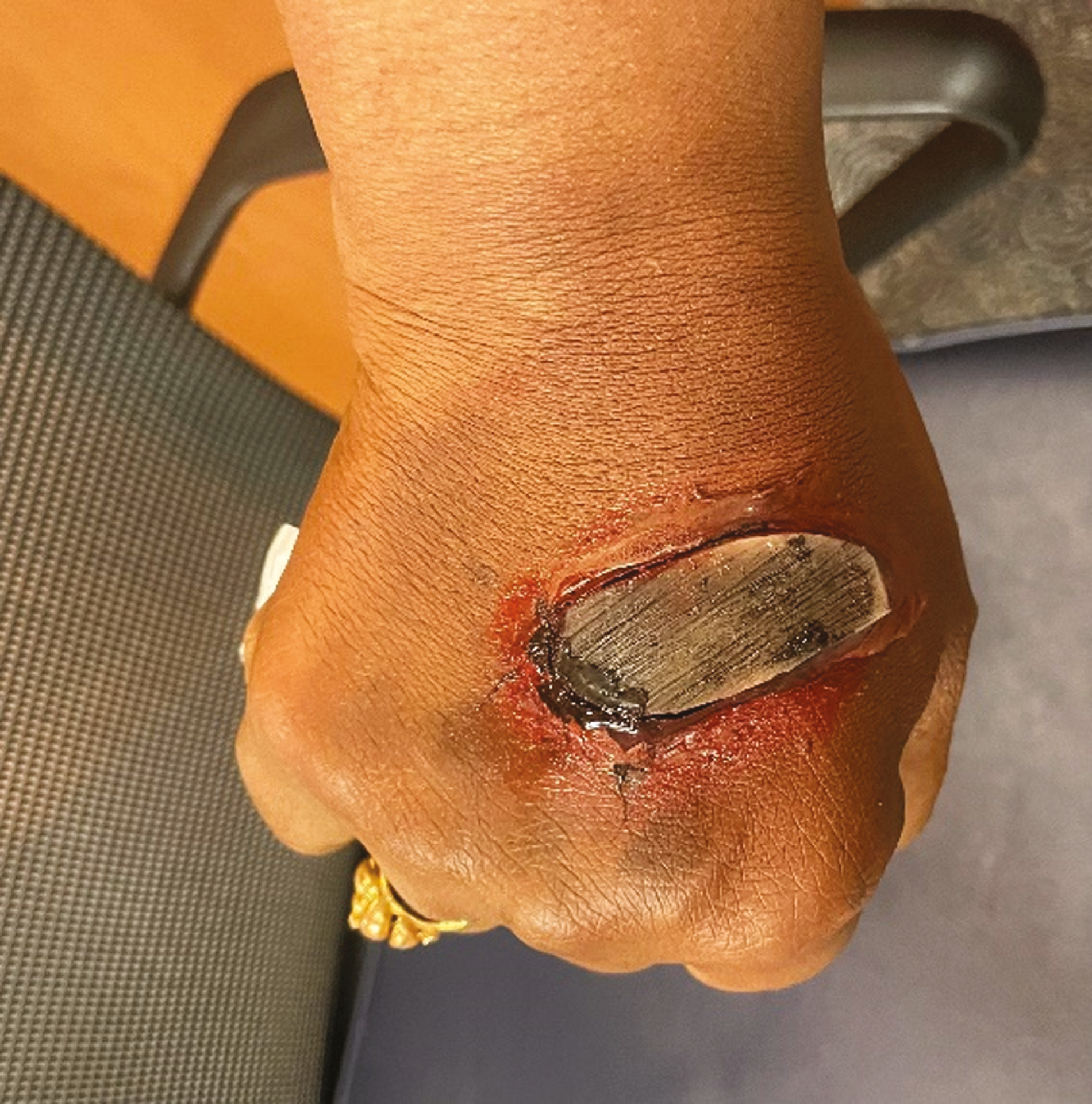
Anthrax is a serious, life-threatening disease caused by the spore-forming bacterium Bacillus anthracis with three primary clinical presentations – cutaneous, inhalational, and gastrointestinal. The cutaneous form accounts for approximately 95% of cases globally [1]. Historically, the usual pathway of exposure to humans is occupational exposure to infected animals or their products (such as skin, wool, and meat) but spores may also be used in biological warfare. Without treatment, the mortality rates for anthrax infections differ based on the exposure type: around 20% for skin-related exposure, more than 50% for ingestion-related exposure and inhalation exposure is nearly always deadly. However, antibiotics can effectively treat all forms of anthrax infection [2]. In our interconnected world, where threats can be both naturally occurring and intentional, it is crucial that frontline healthcare providers are well-prepared to recognize and appropriately respond to potential cases of anthrax [3]. In this communication, we discuss an in situ simulation conducted in a closed environment depicting a patient actor presenting to the emergency department (ED) in NYC to test the healthcare providers ability to identify a case of cutaneous anthrax, conduct preliminary assessment, escalate clinically and inform local public health authorities.
In situ simulation are physically integrated into the usual clinical environment, allowing for practice in one’s own hospital setting with familiar resources and equipment. These realistic scenarios offer an opportunity for clinicians to recognize signs and symptoms, as well as manage suspected anthrax cases in a controlled environment and test facility protocols and processes. In situ simulations can be used to identify potential problems, assess familiarity to a specific condition or disease, test the robustness of the hospitals’ response and help inform modification to standard operating procedures, protocols and processes. Simulations have been recognized as an effective method for teaching healthcare providers about uncommon, but high-risk, public health threats such as anthrax [4]. The anthrax in situ simulation illustrated how infectious disease detection caused by a bioterrorism event can be tested in an emergency room setting for quality improvement and systems integration between departments.
We conducted an in situ simulation of a patient presenting to an ED in New York City with a lesion on her hand. She reported opening an envelope at home that contained white powder. This scenario represents a classic public health concern and was designed to raise suspicion for cutaneous anthrax. The cutaneous anthrax was simulated on the right hand of the patient actor using moulage (Image 1). Moulage is the art of applying realistic, mock injuries for the purpose of training emergency response teams, medical and military personnel in emergency preparedness situations.


Ulcer with a black center caused by cutaneous anthrax simulated on right hand of patient actor using moulage
The key aspects of the simulation included the patient’s presentation with a characteristic painless, pruritic papule with surrounding edema, which eventually ulcerated and formed a black eschar, a central component in the identification of cutaneous anthrax [5].
The objectives of the simulation were three-fold:
Our target audience included clinical healthcare frontline workers, doctors and nurses in emergency medicine who would be amongst the first to encounter an infectious disease patient. We also included administrators and clinicians that need information about emergent infectious disease management through infection prevention and control protocols.
During the in situ simulation the clinician was expected to assess the patient for an infectious disease, gain additional epidemiological history of the incident, escalate care and ensure infection prevention and control precautions are implemented and notify public health authorities.
A debrief of the simulation was conducted to provide feedback from the learners of the in situ experience. During the debrief the doctor and the nurse who provided patient care in this simulation noted that they should have escalated their response including isolating the patient sooner and notify infectious disease and infection prevention and control teams, as well as escalating to public health authorities earlier. The clinicians discussed how vital this simulation and a defined protocol can be for all frontline healthcare workers in the hospital-wide facilities.
Rapid recognition of the disease and prompt escalation, both clinically and to public health authorities, are critical given the potential for an anthrax attack. In a busy ED setting with limited private space, where a well-appearing patient may present with an acutely life-threatening and contagious disease, increased awareness of these processes by frontline workers increases management efficiency. The simulated scenario provided the healthcare team with an opportunity to work through the logistics of isolation precautions, rapid diagnostic procedures, immediate treatment initiation and the need for public health notification [6]. The scenario also underscored the potential challenge of managing anxiety among other patients and staff in the ED, ensuring timely and effective communication with all involved parties, including law enforcement and the media, while maintaining the patient’s confidentiality and safety [7].
With the unpredictable nature of public health threats, both natural and intentional, ED personnel must be prepared for all potential hazards. Training simulations like the one described here offer invaluable hands-on experience for frontline healthcare providers and test facility protocols and processes. Effective recognition, management and communication by healthcare providers are essential to ensure patient recovery and limit further exposure in the case of cutaneous anthrax. Through simulation, we can enhance readiness, contributing to a more resilient healthcare system.
None declared.
None declared.
None declared.
None declared.
None declared.
1.
2.
3.
4.
5.
6.
7.